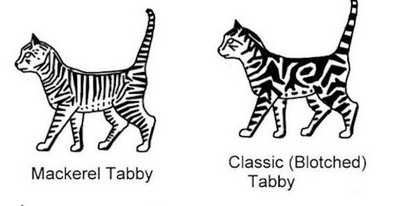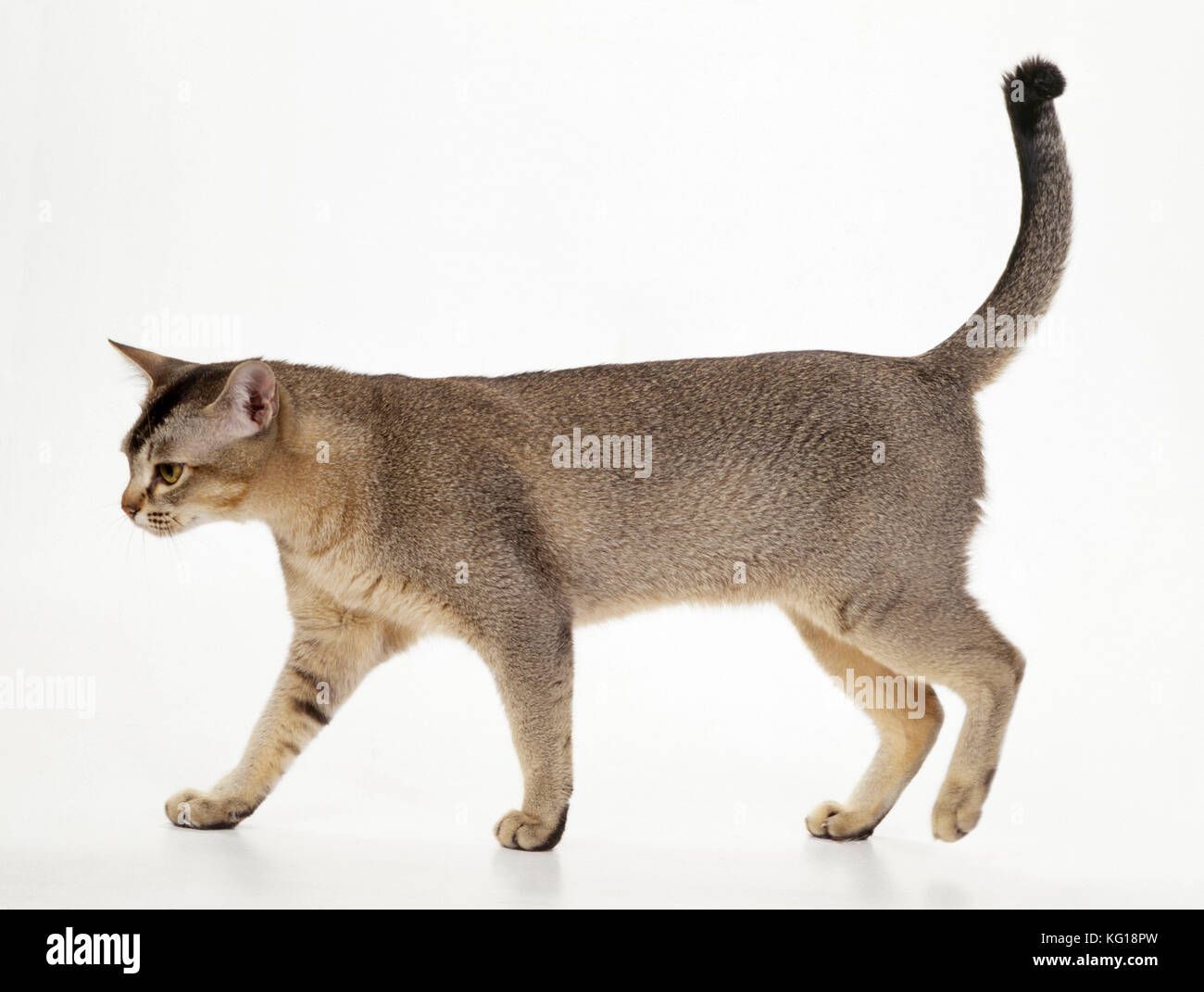Tabbies and Torbies
So now that we've got fur colors down, it's time to discuss tabbies!
The first thing to note about tabby cats is that TABBIES ARE NOT A BREED. Tabby is a specific coat PATTERN, and can exist in various different types of cats, regardless of breed. This is the most common coat pattern to exist in cats. A tabby cat is simply a cat who has markings on their pelt that are darker than their fur color, so it is NOT genetically possible for a cat to have tabby markings lighter than their pelt color.
The agouti gene is responsible for controlling whether or not a cat is a tabby. This gene is NOT sex-linked, as mentioned before.
The agouti (tabby) allele is represented by an uppercase A, and is dominant to the non-agouti (solid colored) allele, which is represented by a lowercase a. Because the agouti gene is dominant, a cat with the genotype AA or Aa would be a tabby, and a cat with the genotype aa would be a solid colored cat.
As mentioned earlier, ginger cats are always tabbies, and a ginger cat with the genotype aa would still appear as a tabby, since the agouti gene is "locked in" to the ginger pigment. A solid ginger cat cannot exist, regardless of the genotype.
The five main patterns for tabbies are mackerel (striped), classic (blotched), ticked, broken mackerel, and spotted.
Mackerel tabbies have striped markings, while classic tabbies have swirled markings. Here is a side-by-side comparison of the two, from messybeast!

Mackerel tabbies and classic tabbies are both two different alleles of the same gene. Mackerel tabbies are represented by Mc, and are dominant to classic tabbies, which are represented by mc. So a mackerel tabby must have the genotype Mc/Mc or Mc/mc, and a classic tabby must have the genotype mc/mc.
Ticked tabbies are tabby cats where the tip of each hair is colored darker than their base color. They don't look that similar to most tabby cats, but ticked tabbies are still tabbies. Here is an image of one:

The ticked tabby allele is represented by an uppercase T, and it is dominant to the non-ticked tabby allele (represented by a lowercase t). If a cat's genotype is TT or Tt, then they would be a ticked tabby, and this gene would mask the effects of whatever mackerel/classic tabby allele they may have.
While cats can't be solid ginger, a ginger ticked tabby cat would have faint tabby markings. This is the closest thing you can get to a solid ginger cat. A ginger tabby cat that does NOT have the agouti allele would be known as a pseudo-tabby.
Lastly, we have spotted and broken mackerel tabbies. A broken mackerel tabby would be a mackerel tabby whose stripes have been broken up into dashed lines, and a spotted tabby's stripes would be broken up into distinct spots. Unfortunately, not much is known about the genetics behind these two tabbies, so I don't want to spread any misinformation on them. But I do know that it works the same way as ticked tabby cats, where spots (Sp) is dominant to no spots (sp). If a cat has the genotype Sp/Sp or Sp/sp, they'd be a spotted tabby. If they had sp/sp, they would not be a spotted tabby. This gene overrides any effects of the mackerel/classic tabby genes, but the ticked tabby gene overrides the effects of this gene.
There are many other types of tabbies as well, but these five are the main types of tabbies.
About torbies:
As stated earlier, a cat is a torbie if they are a tortoiseshell cat with tabby markings. Torbies are quite rare, because unlike regular tabbies, a torbie MUST have the genotype AA in order to be a torbie. Otherwise, the cat would just be a regular tortoiseshell.
(I couldn't find this info on Messybeast, so credits to CrystalwingOC for telling me how this works!)
Bạn đang đọc truyện trên: Truyen247.Pro